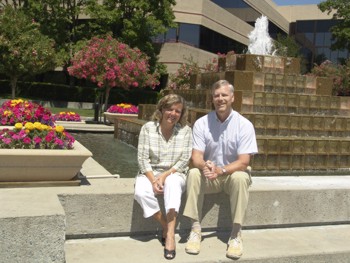Exxim Computing Brings Three Dimensions to Medical Imaging
Exxim Computing Brings Three Dimensions to Medical Imaging

The ability to non-invasively see inside the human body was one of the most dramatic medical advances of the late 19th Century. The late 20th Century brought us the two dimensional computer-based CT scan and, as we move forward into the 21st Century, the advances continue by expanding the imaging process further into the realm of three-dimensional imaging using personal computers and software, giving medical professionals even more powerful and affordable tools in finding and combating disease. One of the innovators in three-dimensional computer imaging can be found right here in Hacienda at 3825 Hopyard Road: Exxim Computing.
Exxim Computing Corporation was founded in 2002 to serve medical and other imaging markets with high-end software for PCs. Exxim's products are designed to make imaging more affordable and easier to maintain. Exxim also offers engineering services ranging from system design consultation to innovative X-ray detector design. Exxim has a total of six employees and three consultants, ranging from software developers to electrical engineers to chip designers. Horst Bruning, PhD, president and CEO of Exxim Computing, has been in the imaging industry for 25 years.
"Exxim basically does three things," Bruning says. "One of them involves a software package that we've developed that enables people to obtain three-dimensional X-ray images from two-dimensional projections. A CT scanner has a line detector that revolves around the patient and takes many one-dimensional images. Then, you can calculate a cross section of the patient. What we do is replace the line scanner with a two-dimensional detector. So, each projection is a two-dimensional X-ray image. We take a couple of hundred of them as the machine revolves around the patient and reconstruct a three-dimensional image of the patient with our software. It's the next step in imaging." Using the software - called COBRA - a three-dimensional image can be constructed on a PC (or multiple networked PCs for more processing power) in a minute or less.
The second activity Exxim is involved in is in making CMOS (Complementary Metal Oxide Semiconductor) chips that can be used to build sensors for imaging that allow the scanning machines to operate faster and more accurately. The chips can be put together like tiles, in a manner similar to which a display panel on a computer built, to act as image detectors. In addition, Exxim also provides an upgrade design service that enables owners of a conventional C-Arm scanning machine (the device that revolves around the patient to obtain images in a medical application) to turn them into three-dimensional scanners, hence allowing them to keep their investment in an expensive scanning device while allowing them to move to using Exxim's COBRA software.
While COBRA can also be used in industrial and security scanning - among other things - one of the applications of Exxim's technology that Bruning is very excited about is its use in radiation therapy. "In radiation therapy, it's extremely important for the machines to locate exactly where the tumor is while the patient is on the table so that medical practitioners can concentrate a high intensity of radiation on the tumor without threatening the tissue around it. This technique requires a very precise three-dimensional location procedure, which we have developed. It's still an experimental procedure, but it's been implemented in some clinical sites and it seems to work very well. It could be a major contribution to cancer treatment." Once again, we see an example of technology and medicine working hand in hand.
Photo: Irene and Horst Bruning founded Exxim Computing Corporation in 1992.
Also in this issue...
- Safe Home Makes Digital Video Surveillance Affordable
- Students at Self-Defense Institute Gain Confidence, Fitness
- Business Bits
- Executive Profile: Caitlin Betts, Curves
- Exxim Computing Brings Three Dimensions to Medical Imaging
- MISCO Pacific Helps Local Agencies Conserve Water
- 511 Offers One-Stop Shopping for Commuters with Transit Info, Driving Times, Ridesharing and More
- Pleasanton Newcomers Group Offers Social Activities and More to Help New Residents Feel at Home
- Tri-Valley HR Association Offers Education, Networking for HR Professional
- PeopleSoft House Band Highlights This Year's "Concerts in the Park" Lineup
- Rideshare Thursdays
- Hacienda Index
- Calendar




